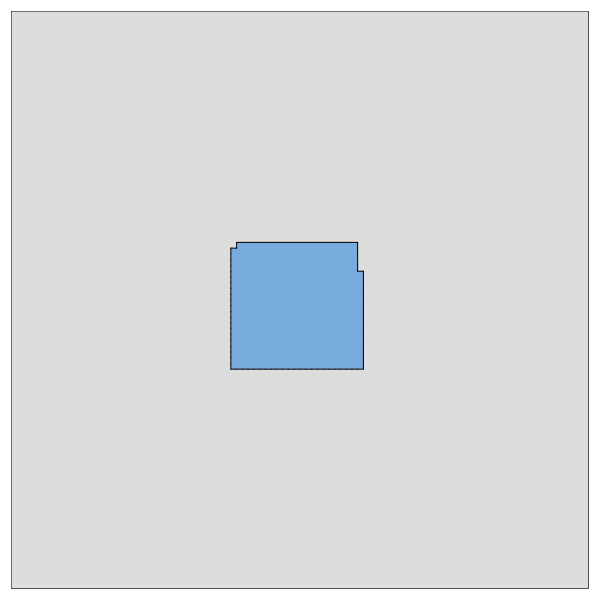Let's Get Moving
Many cells have the ability to move within their environment through the contraction of actin filaments. This mechanism leads to cells performing an "intermittent random walk" which is characterized by periods of persistent movement, followed by periods of being stationary.
Let's see how we can add this kind of behavior to our model,
Start by loading in the CellularPotts.jl package and creating a space where cells can exist.
using CellularPotts
space = CellSpace(100,100; diagonal=true)100×100 Periodic 8-Neighbor CellSpace{Int64,2}Much like in the HelloWorld.jl example, we create a single cell that averages 500 pixels in size.
initialCellState = CellState(names=:Epithelial, volumes=500, counts=1, positions=size(space) .÷ 2);Now the important part. To enable this type of cellular movement, we can add a MigrationPenalty to the model. This penalty requires 3 inputs:
- A maximum activity
- A scaling factor for this penalty (one for each cell type)
- The size of the space
penalties = [
AdhesionPenalty([0 30;
30 30]),
VolumePenalty([5]),
PerimeterPenalty([0,10]),
MigrationPenalty(50, [50], size(space))
]4-element Vector{Penalty}:
Adhesion
Volume
Perimeter
MigrationCreate a Cellular Potts Model object
cpm = CellPotts(space, initialCellState, penalties);We can adjust the "temperature" of the model (which defaults to 20). Higher temperatures will make model updates that increase the overall energy more likely. This is not necessary for this model, but a helpful feature to know.
cpm.temperature = 25.025.0Our model is more ready for simulation! This can be done using the using the ModelStep! function, interactively through the CellGUI function, or recorded as a gif using recordCPM. Any options to the GLMakie record function can be passed through.
record(cpm, file="LetsGetMoving.gif")

This page was generated using Literate.jl.